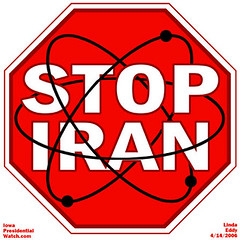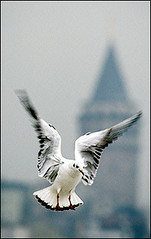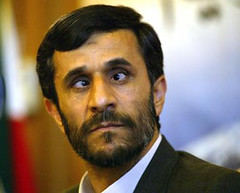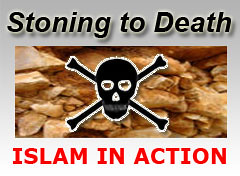
Iraq
If the U.S. is ultimately leaving Iraq, why is the military building 'permanent' bases?
Primary Source: GlobalSecurity.org
Initially, the US established more than a hundred bases of different sizes in Iraq. By the end of 2003, the Pentagon had developed as many as fourteen bases beyond the level of temporary encampment.
According to the Iraq Study Group, at the end of 2006 there were still 55 US bases in the country and Pentagon requests for funding in the last year have included money for building giant mess halls – capable of feeding 5000 people – new airfields, and other facilities that suggest the U.S. isn’t planning to leave Iraq anytime soon. Below are some of the key facilities and mega-bases.
1) Green Zone (Baghdad)
The Green Zone in Baghdad includes the main palaces of former President Saddam Hussein. The area at one time housed the Coalition Provisional Authority; and now houses the offices of major U.S. consulting companies and the U.S. embassy—by far the largest embassy in world history that approaches the size of the Vatican, or six times the size of the UN compound in New York.
2) Camp Falcon-Al-Sarq (Baghdad)In late September 2003, the 439th Engineering Battalion delivered over 100,000 tons of gravel and is assisting with building roads, walls, guard towers, and buildings for Camp Falcon. Camp Falcon is planned to house 5,000 soldiers.
3) Camp Victory- Al Nasr (Baghdad Airfield)Camp Victory is a U.S. Army base situated on airport grounds about 5 kilometers from Baghdad International Airport. The base can house up to 14,000 troops. Al Faw Palace on Camp Victory is surrounded by a man-made lake and serves as an unofficial conference center for the Army.
WEST OF BAGHDAD
4) Camp Anaconda/Balad AirbaseBalad airbase is the second busiest airport in the world, trailing only London’s Heathrow Airport. Camp Anaconda is the largest U.S. logistical base in Iraq. The camp is spread over 15 square miles and is being constructed to accommodate 20,000 soldiers.There is a 24 hour gym, lighted outdoor basketball courts, Olympic-sized swimming pool, as well as a chandeliered cinema for the troops.
“The closest some troops here come to experiencing the Iraq seen on the evening news is the miniature golf course, which mimics a battlefield with its baby sandbags, little Jersey barriers, strands of concertina wire and, down at the end of the course, what appears to be a tiny detainee cage,” wrote Tom Ricks from the Washington Post.
5) Camp Taji (Taji)
Camp Taji, former Iraqi Republican Guard “military city,“ is now a huge U.S. base equipped with a Subway, Burger King and Pizza Hut on the premises.
6) Taqaddum AirbaseAl Taqaddum Airbase is located in central Iraq approximately 74 kilometers west of Baghdad. The airfield is served by 2 runways—13,000 and 12,000 feet long.
7) Camp Fallujuh The exact whereabouts and name of this base is unknown. Analysts believe that the U.S. is building an “enduring base” in Fallujah, a large town forty miles west of Baghdad.
Fallujah has proved to be the most violence prone area in Iraq. Between early April 2004, when Marines halted their first offensive against the city, and November 2004, when the city was “re-taken” from insurgents, Fallujuh was a no-go area with numerous murders and bombings.
TIKRIT AREA8) Camp Speicher (Tikrit)Camp Speicher is located near Tikrit in northern Iraq, approximately 170 kilometers north of Baghdad. It houses several thousand troops, and a Burger King.
MOSUL AREA9) al-Qayyara (about 50 miles southeast of Mosul)
10) Camp Marez (Mosul Airfield)KIRKUK AREA
11) Camp Renegade (Kirkuk)Strategically located near the Kirkuk oil fields and the Kirkuk refinery and petrochemical plant, Camp Renegade has a dormitory that houses up to 1,664 airmen in 13 buildings with six to eight people to a room.
12) Unknown name (between Irbil and Kirkuk)NASIRIYAH
13) al-Talil Air Base (14 miles SE of Nasiriyah)In 2006, $22 million was authorized by Congress to build a second dining facility was being built to seat 6,000, a double perimeter security fence with high-tech gate controls, guard towers, and a moat.
IRAN BORDER
14) Patrol Base Shocker- (Badraj)Four miles from the Iranian border near the Iraqi town of Badrah. Home to 240 soldiers and contractors including 55 US troops, and a contingent of soldiers from the Republic of Georgia, the base became operational in mid-November 2007. Also has military and civilian analysts monitoring the extent of Iranian influence in Iraq.
The supplemental funding bill for the war in Iraq signed by President Bush in early May 2005 provides money for the construction of bases for U.S. forces that are described as "in some very limited cases, permanent facilities.
" Several recent press reports have suggested the U.S. is planning up to 14 permanent bases in Iraq— a country that is only twice the size of the state of Idaho. Why is the U.S. building permanent bases in Iraq?
In May 2005, United States military forces in Iraq occupied 106 bases, according to a report in the Washington Post.1
Military commanders told that newspaper they eventually planned to consolidate these bases into four large airbases at Tallil, Al Asad, Balad and either Irbil or Qayyarah.
But other reports suggest the U.S. military has plans for even more bases: In April 2003 report in The New York Times reported that "the U.S. is planning a long-term military relationship with the emerging government of Iraq, one that would grant the Pentagon access to military bases and project American influence into the heart of the unsettled region."2
According to the Chicago Tribune, U.S. engineers are focusing on constructing 14 "enduring bases," to serve as long-term encampments for thousands of American troops.3
As of mid-2005, the U.S. military had 106 forward operating bases in Iraq, including what the Pentagon calls 14 "enduring" bases (twelve of which are located on the map) – all of which are to be consolidated into four mega-bases.














1 comment:
warcraft gold
warcraft gold
eve isk
wow power leveling
wow power leveling
wow power leveling
wow power leveling
warhammer gold
warhammer power leveling
bestchina traveland
tiffany Jewelry
Tiffany Bracelets
Post a Comment